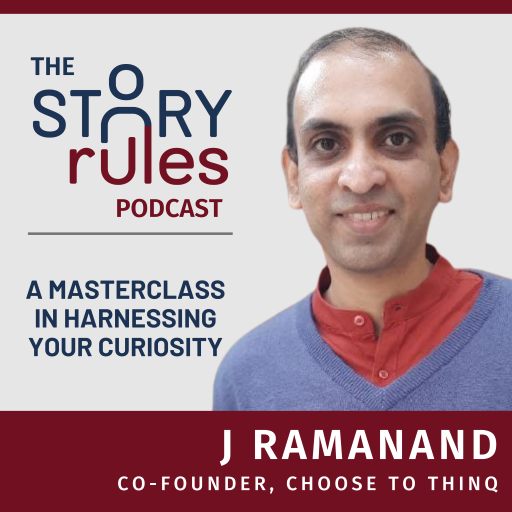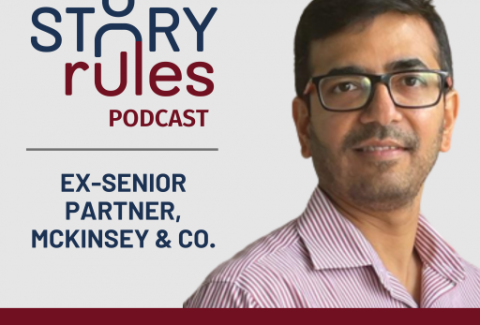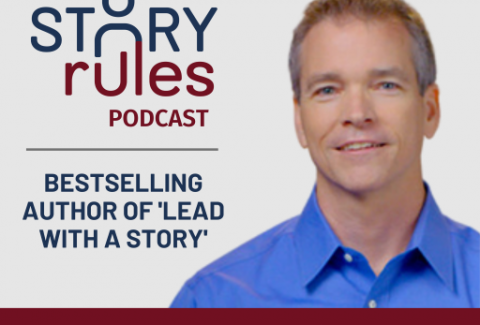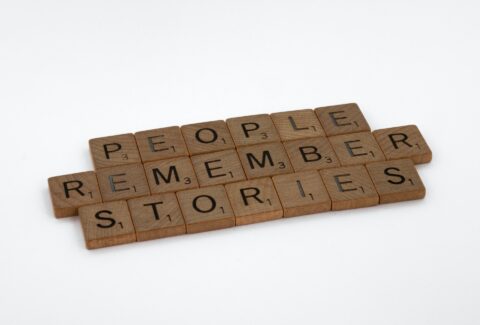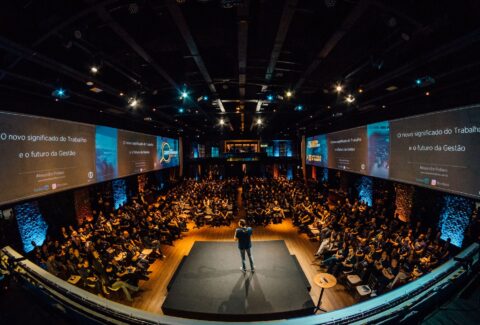E14: A curiosity masterclass with J Ramanand
I’m excited to be releasing this episode of a fascinating conversation with J Ramanand.
Ramanand is the Co-Founder and Upleveler at Choose to Thinq, a unique firm which enables organisations and individuals become future relevant.
But more than that, he is a master quizzer, quizmaster and an expert at using the power of curiosity to help others uplevel themselves in a ‘shape-shifting’ world.
Speaking of quizzing, here’s a confession – I’ve always been in awe of quizzers.
For one, the sheer thrill of quizzing.
Even though I’ve participated in just a handful of quizzes throughout my life, I still remember the memory of the dopamine hits when I would get an answer right. It must be amazing to get these hits more often in life!
The second reason relates to the skill of quizzing.
Now, many of you may know this, but for those who don’t: Good quiz questions are not reliant on memory. As Ramanand says, they have 50% of the answer hidden in the question itself… and the participant can use the powers of deduction to arrive at the answer.
Now, while the ability to deduce an answer with the given clues is one key quizzing skill, the real skill for me is the craft of creating good quiz questions. And it is this craft which has several parallels with storytelling. Both skills use the power of surprise, familiarity and curiosity to deliver an engaging experience to the audience.
Ramanand is uniquely placed to shed light on these two related skills:
– He is a die-hard quizzer: He was the youngest winner at BBC’s Mastermind India and has appeared as an expert on the show Kaun Banega Crorepati (India’s version of ‘Who wants to be a Millionaire’)
– He’s a sought-after quizmaster: For the last couple of decades Ramanand has been setting questions on an average of at least one a day. That’s a database of thousands of questions!
– He’s an engaging and thought-provoking writer
– He works closely with the leadership at different organisations in helping them navigate the ‘shape-shifting world’ and stay future-relevant
In the conversation, I had a ton of fun geeking out on quizzing and storytelling techniques with Ramanand. And oh, make sure you listen to the inspiring and fascinating story about the Indian flute maestro, Pt. Hariprasad Chaurasia.
Let’s dive in.
As always, I’m sharing some some lightly-edited extracts from the conversation – tagged under ‘the 3Ps’ – the Personal, Philosophical and the Practical (all emphasis mine):
1. Personal:
a. If your child/employee is naturally curious, then as a parent, mentor or guide, get out of the way; keep basic guardrails but let them drive their curiosity
Ramanand was a voracious reader as a kid and was interested in quizzing from early on. I asked him was there someone mentoring him through these years:
Ravi: Did you have a role model, or somebody at home who would encourage you? Or was it all mostly self-driven?
Ramanand: I think, a lot of smart people just got out of the way. They just said, “Go ahead.” I briefly lived in Chennai for five years, where there were a lot of book exhibitions, and we would just go there and pick up some books. Of course, like any good middle-class family, there would be one eye on the budget, for sure. But I was allowed to pick up stuff, try out stuff. There was a lot of eclectic stuff there. Like I said, along with my cousins, who were generous in keeping me well stocked (with books), it just kept coming; that mental model of inversion where you (say) “just avoid these habits”, I think they did that to me, they just got out (of the way).
2. The Philosophical:
a. Swap anxiety for curiosity – dealing with change
During the conversation, we discuss a fascinating article written by Ramanand.
The post was written in the context of the move from physical offices to 100% remote working. A lot of folks were struggling with the move.
Ramanand’s insight: This is not the first time that humankind was grappling with working with remote teams. He looks back through history and profiles three inspiring stories which offer lessons on how to manage the transition better.
Finally, he shares an over-arching insight from the three stories:
Ravi: There was a lot of wisdom in just this fairly compact piece, where you’ve packed in 3 very different stories, from very different fields, all of them making different points, but coming together to give a lot of guidance on how to navigate (all the changes that have come).
Ramanand: I think the message that I wanted to leave people with was “Can you swap anxiety with curiosity?” This is something I’ve been trying to do for myself: when you’re in an anxious situation, can you take a curious approach and say “What is going on? What can I learn from this?”, whether you can postpone the anxiety to when it is more useful to be anxious, is something that I was keen to get out in this piece.
b. Four ideas to introduce yourself/your company in a more impactful way
Choose to Thinq is an interesting, sui generis firm… which make sit a bit difficult to explain what they actually do!
Ramanand and his co-founder Harish have spent several years iterating on and refining the story they share with collaborators and employees.
As Ramanand says: This is something we struggled with for a long time. One (issue was that) there was a wide variety of things that we were dabbling in, or that we were doing; we were dipping our toes in all sorts of ponds, and oceans, and lakes. In a sense, because we said that we cannot do an elevator pitch in the early days, we said, “let’s walk on the staircase a little bit, we’ll tell you what we’ve been doing.”
Based on their experimentation over the years, here are 4 ideas you can use to introduce yourself/your company:
i. Start with your Why – tell them what makes you tick
Ramanand: We said “Okay, at least for the time being, let’s flip it into a strength. Let’s say that because of this almost inarticulable reason, people want to work with us.” And I think some of the best successes we’ve had with Choose To Thinq, have been people coming to us with a problem and believing we were the only people to solve that problem. They couldn’t think of anyone else. It was usually very amorphous, very ambiguous. And so, we said fine initially, let’s flip it and say that if someone wants to have that conversation, if someone can bear to hear about a little bit of our story, how did we get here? That’s when we did try to emphasize on our personal journeys; how did we get here? What are we doing here? What have we been doing in the last couple of years? If you had the patience and the interest in that story, in that elaboration, then perhaps we were a good mental fit for each other. It became a self-selection criterion. What you’re doing is, you’re saying “how can I send out that beacon so that more people get attracted to the right kind of people?” And in many cases, people for whom this did not strike a chord, how can you let them self-select out very early? This is one thing that we did.
ii. Fail fast and find your ‘Story-market fit’
Ramanand: We also tried to have lots of different conversations, at least for Harish, who is the face of conversations externally. We tried to enable as many conversations and as many experiments as possible. So to some people you are telling the story; to some people you are trying material out on them, in terms of like one-line or two-line explanations, to see what resonates. You just go out and try not to do the same thing 100 times. You do 100 things (at) once and you start weeding things out.
Ravi: (Just) like how a start-up tries to find product-market fit, what Harish and you were trying to do is to find – I don’t know if this is the right word, but, a story-market fit; What story resonates really well with the audience? Let’s keep trying different variants: short, long, detailed, angular, analogy, and then see what works really well. I love that. I think that’s also a great lesson for anybody who’s trying to tell either their own story, or their organization’s story; try different things. You cannot be the best judge, the audience will be the best judge, and what resonates will work.
Ramanand: Yeah, I like the idea of a story-market fit. In fact, I would go one step further and also say it’s like a value-market fit, or a value to value fit. The story becomes a vehicle for sharing that piece of value. So, if there is a meeting of minds, there is something that is in common with those two people in that particular context. And I think that story, or the interaction that one has, brings that to life in a way that I can say, “Yeah, you’re my kind of person.”
Ravi: I love that! And the other thing that resonates with me when you say that is the whole concept of trust. When Aristotle talks about Ethos, Pathos, Logos. We are persuaded when we trust other people, so values are how we trust other people. And the story is a vehicle that generates that trust on both ends. That’s a great additional point.
iii. Tailor your story for the audience
Ramanand: I think this must have been very difficult for a lot of our associates, our collaborators, “Karte kya hain? Ghar pe kya bolu?” (What do we do? What do I say at home?) because we had a lot of young folks, (who were) just out of college, (who had) never been to a regular company. I’m sure their parents were wondering what is going on. We, in fact, even came up with these (suggestions), “Just tell them this.”; “This is the easiest explanation that will satisfy them.” And in my own case, for example, when I would meet relatives – I would tell them different parts of what I do, depending on what I thought they were interested in. For some people, I would tell them the quizzing part; some people, I would tell them consulting part; some people, I would tell them (about) the work that we did on innovation. It’s like you know you’re an elephant, and you’re surrounded with people with limited visibility. I wouldn’t call them blind, (but) for whatever reason, they are not interested in the entirety of the picture. No one really is. So, can you become smart in understanding what this audience wants, give it to them, and wait for them to see if they want to go further? If they want to, let’s do a deep dive, I’ll take you further – is an approach we took, but I think, finally we’re happy that in the last couple of years, we’ve corralled it into a box, where we can say, “Hi, I’m from Choose To Thinq, and I help organizations, teams, and individuals be continuously relevant for the future. I can talk about culture, and curiosity, and I’ve got a case study. Finally, I think we just make sure you survive long enough to be able to discover your story (that’s been) waiting for you, a decade later.”
iv. Make your intro about how you impact your audience
This was an observation that I made based on how Ramanand had introduced himself in another podcast.
There, instead of introducing himself as “Co-founder and Upleveler at Choose To Thinq”, he said something much more evocative:
He had said (and I paraphrase): So there’s a famous quote, “The future is already here, it’s just not evenly distributed” (by William Gibson). At Choose To Thinq we attempt to distribute the future more evenly.
Based on this intro, here was my analysis of what makes it a powerful one:
Ravi: (What) I saw in your description, is that instead of saying “I am Co-founder, and I am this designation”, which is inward looking, you have reframed it as, “who do I help and how do I help them?”
So, “Who do I help? I actually help all leaders”, in your case. (And) How do you help? you help them by being future relevant, by distributing the future more evenly. And I think that is a framework that everybody can use. Instead of saying, “I’m an accountant”, (saying) “I help save your taxes” is a better reframing of the same thing.
3. The Practical
a. When capturing information, don’t let the perfect become the enemy of the good; a working system is better than no system
Ramanand takes in copious amounts of information through various channels and I was curious to know how he manages to capture insights from the same.
Ravi: I want to get a little tactical, Ramanand, on the fact that you mentioned you were reading in a library and you came across the surveyor’s chain fact; you came across the World War 1 story when you were reading a book on the Manhattan project; and in your reading club, you came across the Professor Hull story.
When you come across all these new things, these are what we call the #TIL moments… do you have a system (to note them down)? And what is your system – do you note these down someplace? Or is a lot of it memory reliant?
Ramanand: Earlier, there was no system. Now, there is a semblance of one. The first thing is to capture it and not to let that fleeting moment just go past. You have to really arrest it and put it down somewhere. Earlier, I used to use Evernote as my single source for dumping, but I’ve now broadened a little bit. I used to have Evernote and a notebook. My 22-yard story came from a notebook that I used to take notes in, whereas other things were in Evernote, which I still have. What I’ve done now, is become a little more laissez-faire about it. It’s more important to capture it, it doesn’t matter where I capture it. It’s about trapping the beast and not letting it fly. I have a bunch of places that I store it in. I have that notebook –
Ravi: A physical notebook?
Ramanand: Physical notebook, yes. I have a group that I created, earlier it was on WhatsApp, now it’s on Telegram. It’s a one-man group, and I just put notes there. I’ve trusted myself to put a few keywords that I will be able to use to recreate everything else. So “Blind professor”, “Hull”, are good enough to do a private search. Or, with some difficulty, you can retrace your steps. Because there is going to be inertia. Taking a nice, big note is not something that I’m going to do every time. It’s going to happen sometimes. I recognize that now, and I just put down keywords. That is one more source. The other source is, when we read these things, we post takeaways in our internal group. That becomes a source of information.
Ravi: Is it a Slack group?
Ramanand: It was on Telegram, now it’s on Slack. So, the message is, same, “agnostic of tool”, I’m really not that anal about where it is, whether it’s tagged well, and so on. I recently started using Readwise, the app, for highlights. If I’m on Kindle, I was highlighting earlier, but now I highlight and it goes into Readwise as well. So, it’s really horses for courses, depending on what environment I am in, I will put them there. I am reasonably sure that I don’t have to be worried about using that. The system of going back to it is a little less structured, but I know that if I’m setting a question, I will look in all these places. It’s not like there’s 10 or 20 different places, it’ll be more like 5 or 6, max. So, I’ll go through my notebook, my Evernote, my Telegram group, my conversations on Slack, and some of it will be memory. If you do enough of it, just pure quantity – that takes care of the quality.
Ravi: That is interesting. So, what you’re saying is to go for convenience; don’t say, “I have to have the perfect place to note it”, just go for it, and when you’re looking for it (the workload) may increase, “Oh, it’s not in Slack? Okay, let me try Telegram”, you’ll finally get it after looking in 3 or 4 places.
Ramanand: And a number of times where I’ve lost it in just 15 or 20 minutes. There’ve been numerous such occasions. I’ve said, “Let’s just put it down.” Since the same thing will happen anyway, if I lose it, I lose it; it’s the same as what’s going to happen 15 minutes in the future. We do overestimate our future selves. I do not trust the future Ramanand with any of these things, so I better do it.
And those were the highlights of my conversation with Ramanand J, one of the most thoughtful and knowledgable folks you can hope to have a conversation with.
A few things which stood out for me in the episode:
– How the holding back of the known and the highlighting of the unknown can make for a surprising story moment
– When you are feeling worries, the importance of leaning on curiosity, not anxiety
– The need for companies to shape their own narratives and not letting it be driven by others
You can enjoy my conversation with Ramanand at your favourite podcast location:
Browser
Podcast apps: Apple Podcasts | Spotify | Google Podcasts | Stitcher | Podcast Addict | Pocket Casts
Happy listening!
If you find the content valuable, please rate and review this podcast on iTunes, Spotify, Google Podcasts, or wherever you listen to them (links above). It’ll help others like you discover these insights!
This podcast was hosted by me, Ravishankar Iyer. Audio editing by Kartik Rajan. Transcript editing by Amisha Jha and all-round support by Sanket Aalegaonkar.
Thanks,
Ravi

